Table of contents
Table salt, also called cooking salt or salt, is a substance commonly consumed in the human diet. Excessive consumption poses health risks. There is no quality protected by an organic label because it is not grown and is never raw .
Use in the kitchen
Table salt, also known as cooking salt or colloquially just salt, is a salt suitable for consumption. In addition to rock salt and evaporated salt, it also includes sea salt that can be used in the kitchen. The finer the salt, the faster it dissolves and the stronger the taste.
Table salt seasons almost all foods and foodstuffs. It is used to prepare all kinds of dishes and to refine them afterwards. Savory dishes are seasoned with table salt, but vegan desserts and pastries also benefit from a pinch.
Salt has the ability to improve the palatability of food. It not only gives dishes the desired salty taste, but also enhances the perception of other aromatic compounds and influences the activity of some enzymes responsible for flavor formation. 1
As a result, salt is a frequently used food additive in industrial food processing and one of the most popular seasonings in many households. 1 Many people consume too much salt. 2 As a result, over time, people find low-salt foods bland. Excessive salt consumption has a negative impact on health (see the chapter "Danger - Intolerances - Side Effects").
It is best to avoid eating ready meals and processed foods that contain a lot of salt and instead eat fresh food. Season more with herbs, spices or other flavorings (e.g. onion, garlic, lime, lemon ). Only add a little table salt at the end to taste. Raw food naturally contains salt. A balanced diet based on raw food does not require any additional salt intake.
Can you use table salt for cooking? If you put a little salt in the water, more of the flavor and ingredients will stay in the vegetables. This is because the salt solution prevents the ingredients from being washed out. Salt water takes about the same amount of time to boil as unsalted water. 38 To ensure that as many ingredients as possible are retained, the vegetables should be steamed in a steamer or steam cooker rather than boiled in water. You often read that you should only salt pulses (beans, lentils, chickpeas) after cooking, otherwise the cooking time will be longer. This is not true, because the salt softens the cell walls and the cooking time is shortened. 39
Maximum recommended daily salt intake can be found in the chapter "Effects on Health".
Apart from its use as a seasoning and additive, salt is used as a preservative for various foods (e.g. meat, fish, cheese, vegetables) because it reduces water activity and inhibits bacterial growth. 1
Vegan recipe for decorative flower salt
Ingredients: 1 cup salt, 1 cup dried flowers without stems (e.g. lavender, marigolds, nasturtiums, rose petals, cornflowers, daisies, dandelions, mallow, chive flowers).
Preparation: Pluck the petals from the flower calyx. Grind the ingredients in a mortar, food processor or blender to the desired degree of fineness. The decorative flower salt gives dishes a distinctive aroma.
Vegan recipes with salt can be found under the note: " Recipes that have the most of this ingredient ".
| Not only vegans or vegetarians should read this: Vegans often eat unhealthily. Avoidable nutritional errors . |
Purchasing - Storage
Salt is available in various forms and qualities in practically all grocery stores. Table salt is available in supermarkets (e.g. Coop, Migros, Denner, Volg, Spar, Aldi, Lidl, Rewe, Edeka, Hofer, Billa ), organic supermarkets (e.g. Denn's Biomarkt, Alnatura ), drugstores, health food stores and organic shops. Salt is differentiated mainly by grain size (fine-grained, coarse-grained) and origin. Salt can also be natural or refined (washed, filtered, heated). Table salt is sold in mills (salt shakers), cardboard or plastic packaging.
In various countries, table salt is mixed with iodine . This is to ensure the supply of iodine in areas with iodine-poor soil. If iodine-free salt is used in such areas, it may be necessary to take in iodine in another form, e.g. from algae. Fluoride is also sometimes added. Table salt also often contains anti-caking agents (separating agents), so-called flow agents. These maintain the flowability of salt and prevent it from clumping due to humidity. Some of the flow agents are controversial and potentially harmful to health. It is worth taking a look at the list of ingredients.
Salt is an inorganic product that does not come from agricultural production. Therefore, salt cannot meet the requirements of organic agricultural products and therefore cannot be certified organic. However, (non-certified) organic salts can be found, as salt is included in the scope of the organic regulation, but without any specific European rules. 3,4 The German Organic Food Industry Association ( BÖLW ) is calling for salt to be removed from the scope of the organic regulation, as the extraction of a mineral does not fit the logic of environmentally friendly organic farming (without the use of mineral nitrogen fertilizers and chemical-synthetic pesticides) and only causes confusion. 4
You can find salt described as raw in online stores. It is not clear whether this really indicates raw food or whether it alludes to an unprocessed quality. The general rule for raw food is that foods and products that have been heated to temperatures above 42 °C are not raw. This is important for plant-based substances because cells die above 42 °C (slightly higher for animal substances), but no matter how salt is heated, it is not important in this respect. Sodium and chlorine came to the earth when it was formed around 4.6 billion years ago. So it was there when the earth was glowing. We have included the terms "raw" and "organic" in the title so that you can find the answers to these questions.
The availability of salt varies depending on the size of the store, catchment area, etc. Our recorded food prices for the DA-CH countries can be found above under the ingredient image - and by clicking you can see their development at different suppliers.
Storage tips
Since salt absorbs moisture from the surrounding air, it should be stored in an airtight, dry place. This way it will last for years. There is no risk of infestation by insects, fungi or bacteria.
Ingredients - Nutritional values - Calories
We realistically show you the ingredients of this mineral per 1 g (instead of per 100 g as usual).
Table salt is calorie-free and contains neither carbohydrates nor proteins, fats or vitamins. Table salt consists primarily of sodium chloride (NaCl) - with 984.5 mg NaCl per 1 g of table salt, more than 98%. Of this, 387.6 mg/1g is sodium (Na), or just under 40%. 5 Chloride is not listed in ingredient tables - the mineral is mainly absorbed with sodium via salt. When rock salt and sea salt are extracted, around 1-3% of other salts remain in addition to NaCl. The salt sold is mainly purified, refined salt from brine, so-called evaporated salt.
Other minerals and trace elements found in small quantities in table salt are manganese (0.001 mg/1g), calcium (0.24 mg/1g), copper (0.0003 mg/1g), iron (0.0033 mg/1g) and zinc (0.001 mg/1g). 5
Note: We show salt according to the maximum value of the GDA ( Guideline Daily Amount ) as 100% for a daily amount, namely 2.4 g/day of sodium. This corresponds to 6 g of salt and includes the salt contained in the food. The guideline for daily intake ( Guideline Daily Amount ) was developed by the European Food Industry Association FoodDrinkEurope ( FDE ). It is based on recommendations from studies by Eurodiet . In Germany, the GDA label appears in small barrel-shaped fields on packaged foods. 6 Australia and New Zealand use a modified form called the Daily Intake Guide (DIG). 7 In the USA, Facts Up Front is used. 8
There is also the Reference Intake (RI), which also indicates 6 g of salt per day. 9 The easily recognizable Traffic Light Rating System with the traffic light colors green, yellow and red is used on packaging, especially in Great Britain. For table salt, green stands for up to a maximum of 0.3 g of salt per 100 g of product. Yellow means 0.3-1.5 g/100g, red >1.5 g/100 g or from 1.8 g per portion. 10
The complete ingredients of salt, the coverage of the daily requirement and comparison values with other ingredients can be found in our nutrient tables. In the article Nutrients explained you will get a detailed insight into the topic.
Health Effects
What does salt do in the body? Sodium chloride, commonly referred to as salt, is an important substance for the human body. It contributes to homeostasis (balance of body functions), regulates the body's water balance, is necessary for osmotic balance in cells, and maintains acid-base balance. In addition, sodium is essential for the transmission of nerve impulse signals, is involved in the absorption of nutrients, and enables the blood to transport carbon dioxide from tissues to the lungs. All human fluids, including blood, sweat, tears, and digestive juices, contain salt. 1,11
The body of an adult contains 150-300 g of salt. 12 It is estimated that around 0.5 g of sodium is needed daily to maintain vital functions. According to the Institute of Nutritional Medicine at the Technical University of Munich, the daily salt requirement for adults is 0.55 mg of sodium. 13 This is around 1.25 g of salt. 14 It is rare for someone to consume too little sodium. However, there are people with hyponatremia (low sodium levels in the blood), which can be caused by, among other things, drinking too much fluid, kidney failure, heart failure, cirrhosis and/or taking diuretics. 15
Although salt is essential to life, it is harmful to health in excessive quantities. Salt consumption today exceeds the recommended levels in most countries (regional differences apply) .16 Since 2011, the Federal Institute for Risk Assessment (BfR), the Max Rubner Institute (MRI) and the Robert Koch Institute (RKI) in Germany have been trying to reduce salt intake to 3.5 g to a maximum of 6 g per day.2 The World Health Organization (WHO) recommends that adults consume a maximum of 5 g of salt per day (approx. 1 level teaspoon), and a maximum of 2 g per day for children.17,18 We recommend a further reduction in your daily salt consumption to as little as 1.5 g. The average worldwide salt consumption is around 11 g/day, while that in Europe is currently estimated at between 8 g and 19 g/ day.17,18 The Swiss population consumes an average of 9 g of salt per person per day. 19 Read about the serious health problems that excessive salt consumption can cause - see the chapter "Dangers - Intolerances - Side Effects".
It is possible that the preference for salt or sodium is a learned behavior. Newborns, for example, react negatively or indifferently to moderate salt concentrations. A preference for salt is only evident at the age of 2-3 years after a period of habituation. Similar effects were observed in groups with low salt intake after initial experience with a high-salt diet, which suggests that the introduction of a high-salt diet at any time in life causes an initial aversion and then requires a period of habituation. 20 Conversely, it takes about 3 months for the body to change its sense of taste and no longer perceive low-salt food as bland. The sense of taste is then even more pronounced and the taste buds react normally again. You can read more about this topic in the book review of "Salt Sugar Fat" by Michael Moss .
Use of salt in medicine: In modern medicine, after severe blood loss, e.g. after an operation or an accident, a 0.9% solution of sodium chloride in water (called isotonic or physiological saline solution) is administered to replenish blood volume. The same solution is also used as a carrier solution for medication. It is used to rinse catheters, wounds, abrasions, nose or eyes. It is also used as an infusion to treat patients with hypotonic dehydration. 21, 22 The healing effect of salt baths is relied upon for skin diseases. Sea salt (e.g. in the form of nasal sprays) also cures breathing problems and upper respiratory tract diseases. 23,24
Secondary plant substances
Secondary plant substances are not relevant to the nutritional profile of salt. Find out more about the importance and classification of these bioactive substances in food in the article on secondary plant substances .
Dangers - Intolerances - Side effects
Is table salt healthy? It all depends on the amount and the condition of the body. Excessive salt consumption (sodium consumption) is associated with an increased risk of high blood pressure, cardiovascular disease, kidney failure, stomach cancer, osteoporosis, obesity and Meniere's disease. 1,11,18,25 Too much salt contributes to target organ damage. High salt levels have been shown to cause systemic vascular dysfunction, stiffening of the arteries, altered kidney function, left ventricular hypertrophy, sodium deposits in the skin, cerebral circulatory disorders, changes in the sympathetic nervous system and possibly bone content. Common underlying mechanisms include excessive inflammation and oxidative stress. 26
A high-salt diet is also associated with an increased risk of cerebrovascular disease and dementia, but it is unclear how salt damages the brain. A 2018 study reported that in mice, excess salt suppressed resting cerebral blood flow and endothelial function, leading to cognitive impairment. Results from this study revealed a gut-brain axis in which dietary environmental factors lead to an adaptive immune response in the gut that promotes cerebral hypoperfusion, neurovascular dysregulation, and cognitive impairment. 27
Evidence from animal studies suggests that sodium has addictive properties similar to other natural reinforcers (e.g., sex, voluntary exercise, fats, carbohydrates, chocolate). The neural substrates involved in drug addiction and sensitization to sodium appetite overlap considerably. Changes in sodium status appear to be able to alter the chemistry and anatomy of putative reward pathways in the brain - the same pathways that are affected by drug abuse and may be involved in maintaining addiction. 20
A 2014 study attributed 1.65 million annual deaths from cardiovascular causes to sodium intake above the reference value - that was almost 10% of deaths from cardiovascular disease. 28 According to the WHO, an estimated 1.89 million deaths per year are related to excessive sodium consumption. 18
How high is the lethal dose of salt? Acute toxicity from excessive sodium intake with a potentially fatal outcome has been observed in the context of the ingestion of large amounts of salt, such as 0.5-1 g of salt per kg of body weight. 29 A review study from 2017 examined deaths due to salt intake. The lethal dose for 4 adults was estimated to be less than 25 g of sodium (<4 tablespoons of salt), and for 2 children less than 10 g of sodium (<5 teaspoons of salt). 30 Special care is required with small children: About 1 teaspoon is enough to lead to salt poisoning - a very salty meal can be life-threatening. 31
In many countries, the largest part of daily salt intake comes from processed foods (approximately 75-80%). 16,17 Foods with particularly high salt content include bread, processed meat, cheese, snacks and seasoning sauces such as soy sauce ( shoyu, tamari ). 17,29 Convenience foods and fast food are also often extremely salty.
Since salt taste plays an essential role in food selection and dish palatability, research is being conducted into ways to improve salt perception and thus reduce salt consumption. A 2022 study confirmed the role of Mediterranean aromatic plants (e.g. herbs) in improving the perception of saltiness and qualified the use of flavored sea salt in food preparation instead of regular salt as a possible strategy to reduce daily salt intake. 1
Reduce your salt (sodium) intake by:
- Eat mainly fresh, unprocessed foods.
- severely limit the consumption of processed foods and convenience products.
- Choose low-sodium, low-salt products.
- use little or no salt when cooking.
- Season food with other spices and herbs instead of salt. 18
Folk Medicine - Natural Medicine
Salt was mentioned in some of the oldest medical texts as an important part of medicine. The ancient Egyptian Smith Papyrus, which is believed to refer to the famous architect and physician Imhotep from the 3rd millennium BC, recommends salt for treating an infected chest wound. Salt was believed to dry and disinfect wounds. The Ebers Papyrus (1600 BC) mentions many salt recipes, especially for making purgatives and anti-infectives (in liquid form, as a suppository or ointment). For example, there was a suppository with honey, plant seeds and sea salt that was used as a laxative, and one with frankincense, plant seeds, fat, oil and sea salt for anal infections. Salt-based remedies were also prescribed for calloused skin, epidemic diseases, to stop bleeding, as an eye ointment and to speed up labor (vaginal suppository). 32
Aristotle, Averroes, Avicenna and Galen recommended the consumption of salted bread. Pliny the Elder (ca. 23-79 AD) reports on the use of sea water for bruises and arthropathies (joint diseases without further specification). 33
The writings of the "School of Salerno" (10th-13th century AD) show that they knew of the use of a mixture of salt, oil and vinegar as an emetic and of suppositories made of salt and honey as an effective remedy for constipation. Powdered and roasted salt had a pain-relieving effect and rock salt was considered a good remedy for fever. They also recommended eating salted bread and salted foods because salt expels toxins. However, they warned against consuming too much salt. 32
Today, for example, salt water gargling is known as a home remedy for sore throats.
Ecological footprint - animal welfare
The CO 2 footprint is primarily used to assess the climate friendliness of a food. This depends on various aspects, such as cultivation method (conventional/organic), seasonality, country of origin, processing, transport and, if applicable, packaging. According to The Big Climate Database, the CO 2 footprint of table salt is 0.44 kg CO 2 eq/kg. 34
For detailed explanations of various sustainability indicators (such as ecological footprint, CO2 footprint, water footprint), see our article: What does the ecological footprint mean?
Worldwide presence - Cultivation
The history of salt production is ancient and probably dates back to 6000 BC, when people in the northern province of Shanxi in China collected the salt crystals formed in a lake. Major civilizations such as the Romans recognized the value of salt and built their own saltworks throughout the empire. They used salt as a commodity and to preserve and process various foods (eg milk, pork, vegetables). Over the centuries, the trade in certain products such as salted fish formed the basis of the economy of certain peoples, as in the case of the Basques. 11
Salt played a central role in the economy of many regions. The first roads for transporting salt were built, so-called salt roads, which led from saltworks and mines to regions with little salt. 33,35 In addition, some of the earliest cities were founded as centers of the salt trade. Salt production is often reflected in the names of these places, for example in Salzburg (Austria), Salzkotten (Germany), Saltcoats (Scotland) and Lavanapura (India). Salt production was an important source of income there. 33 The foreign word "salary" (salary, wages) also testifies to the value of salt in the past: it means pay in the form of salt (salt rations for officials and soldiers). 36
Where does salt come from? The total global production of salt is around 300 million tons, with China, the United States, India, followed by Germany, Canada and Australia, being the six largest salt producers in the world. More than a third of the world's salt production comes from the evaporation of sea water using solar energy. 37
Salt extraction
How is salt extracted? Edible salt (table salt) is extracted from sea water, mineral deposits, surface encrustations, salt lakes and brine springs. 33
There are different forms of salt classification. One of them is the classification according to the type of extraction:
- Rock salt: comes from open-pit or underground mining of halite deposits; is extracted using conventional mining methods.
- Solar salt: from sea water and salt lakes; obtained through solar radiation and evaporation; this includes sea salt.
- Brine: is obtained by dissolving underground salt deposits (solution mining); the product obtained can be used in its original form, as a solution, or used to extract the fourth class of salt (vacuum salt, or evaporated salt).
- Vacuum salt/evaporated salt: obtained through the mechanical evaporation technology of salt brine. 11
How is table salt made? Click here for a short video that explains the differences and extraction methods of salt in an understandable way. Read more about salt extraction from sea water in the article on sea salt .
Further information
What is salt? Salt is the chemical compound of sodium and chloride, sodium chloride (NaCl). What is table salt, what is cooking salt? Table salt and table salt are synonyms. It is salt suitable for consumption. Is table salt cooking salt? Table salt is also called cooking salt. This is an industrially processed, purified salt (usually evaporated salt), which consists almost exclusively of sodium chloride, while other table salts can be natural and contain small amounts of other minerals and trace elements.
You can find various exotic, expensive gourmet salts on the market, such as Fleur de Sel (salt flower; a sea salt), Himalayan salt (pink due to iron oxide), Persian blue salt (blue due to pressure-related shifts in the salt grid or illegally with a colorant), Ayurvedic salt or Kala Namak, which are touted as being particularly flavorful and beneficial to health. However, there is no scientific evidence for this. Read more about the topic, e.g. in the article by Stiftung Warentest .
Alternative names
Important alternative names for salt used in the kitchen are table salt (also called table salt), cooking salt and cooking salt. Incorrect spellings (eg Tafel Salz, Tafel Salt, Tagelsalz, Koch Salz) creep in. In English, table salt is called salt, table salt, cooking salt or common salt.
Other uses
Salt is used in its pure form to regenerate the water softening in dishwashers. Sea salt, especially from the Dead Sea, is very popular in cosmetics as a face mask, peeling or bath salt. Salt lamps are also made from rock salt.
Bibliography - 39 Sources
| 1. | Rosa A, Pinna I et al. Flavoring of sea salt with Mediterranean aromatic plants affects salty taste perception. J Sci Food Agric. 2022;102(13):6005-6013. |
| 2. | BfR Bundesinstitut für Risikobewertung. Blutdrucksenkung durch weniger Salz in Lebensmitteln. 2011. |
| 3. | Umweltberatung at: Nicht alles kann BIO sein! |
| 4. | BÖLW Bund Ökologische Lebensmittelwirtschaft. Keine EU-Regeln für Bio-Salz. |
| 5. | USDA United States Department of Agriculture. |
| 6. | VDD Verband der Diätassistenten. GDA-Kennzeichnung. |
| 7. | Mydailyintake net: Daily Intake Levels. |
| 8. | FMI org: FACTS UP FRONT (also known as Nutrition Keys). GMA-FMI Voluntary Front-of-Pack Nutrition Labeling System. Style Guide for Implementers. 2012. |
| 9. | Referenceintakes eu: The Reference Intakes Values. |
| 10. | University of Aberdeen - The Rowett Institute. Guide to Traffic Light Labelling. |
| 11. | Galvis-Sánchez AC, Lopes JA et al. Chapter 26: Sea Salt. In: De la Guardia M, Gonzáles A (Ed.). Comprehensive Analytical Chemistry. Handbook. 2013;60:719-740. |
| 12. | Spektrum de: Natriumchlorid. |
| 13. | Institut für Ernährungsmedizin Klinikum rechts der Isar, Technische Universität München. Übersicht Mineralstoffe. 2016. |
| 14. | Harvard T.H. Chan. School of Public Health. Salt and Sodium. 2023. |
| 15. | MSDManuals. Hyponatriämie (niedriger Natriumspiegel im Blut). 2023. |
| 16. | Agócs R, Sugár D, Szabó AJ. Is too much salt harmful? Yes. Pediatr Nephrol. September 2020;35(9):1777–1785. |
| 17. | WHO World Health Organization. Fünf Empfehlungen zur Reduzierung der Salzzufuhr für ein längeres und gesünderes Leben. 2022. |
| 18. | WHO World Health Organization. Sodium reduction. 2023. |
| 19. | Bundesamt für Lebensmittelsicherheit und Veterinärwesen. Salzreduktion. 2023. |
| 20. | Morris MJ, Na ES, Johnson AK. Salt craving: The psychobiology of pathogenic sodium intake. Physiol Behav. 2008;94(5):709-721. |
| 21. | Flexikon doccheck com: Isotone Kochsalzlösung. 2024. |
| 22. | Larsen R. Störungen des Wasser- und Elektrolythaushaltes. Anästhesie und Intensivmedizin für die Fachpflege. 2016:832-839. |
| 23. | Sawicka M, Żaba R, Adamski Z. Evaluation of knowledge in the field of proper skin care and exacerbating factors in patients with psoriasis. Postepy Dermatol Alergol. 2022;39(2):401-406. |
| 24. | Jiang M, Chen J et al. Efficacy and safety of sea salt-derived physiological saline nasal spray as add-on therapy in patients with acute upper respiratory infection: a multicenter retrospective cohort study. Med Sci Monit. 2021;27:e929714-1-e929714-7. |
| 25. | Kotchen TA, Cowley AW, Frohlich ED. Salt in health and disease — a delicate balance. N Engl J Med. 2013;368(13):1229-1237. |
| 26. | Robinson AT, Edwards DG, Farquhar WB. The influence of dietary salt beyond blood pressure. Curr Hypertens Rep. 2019;21(6):42. |
| 27. | Faraco G, Brea D et al. Dietary salt promotes neurovascular and cognitive dysfunction through a gut-initiated TH17 response. Nat Neurosci. 2018;21(2):240-249. |
| 28. | Mozaffarian D, Fahimi S, Singh GM, et al. Global sodium consumption and death from cardiovascular causes. N Engl J Med. 2014;371(7):624-634. |
| 29. | Strazzullo P, Leclercq C. Sodium. Adv Nutr. 2014;5(2):188-190. |
| 30. | Campbell NRC, Train EJ. A systematic review of fatalities related to acute ingestion of salt. A need for warning labels? Nutrients. 2017;9(7):648. |
| 31. | Kinderärzte im Netz de: Eltern dürfen Kindern nicht zu viel Salz geben. 2006. |
| 32. | Womer EJ. Blood, Sweat, and Tears - Salt in Medical history. 2015. |
| 33. | Cirillo M, Capasso G et al. A history of salt. Am J Nephrol. 1994;14(4-6):426-431. |
| 34. | The Big Climate Database (Version 1.1): Salt, table. 2024. |
| 35. | Chemeurope com: Salt Road. |
| 36. | Duden de: Salär, das. |
| 37. | Ekrami J, Nemati Mansour S et al. Environmental impact assessment of salt harvesting from the salt lakes. J Environ Health Sci Eng. 2021;19(1):365-377. |
| 38. | Zentrum für Ernährung und Hauswirtschaft Niedersachsen. Stimmt es, dass man Salz erst ins Wasser geben sollte, wenn es kocht? |
| 39. | Bundeszentrum für Ernährung. Häufige Fragen zu Hülsenfrüchten. |

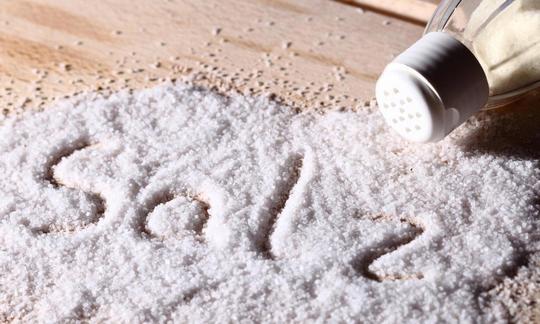

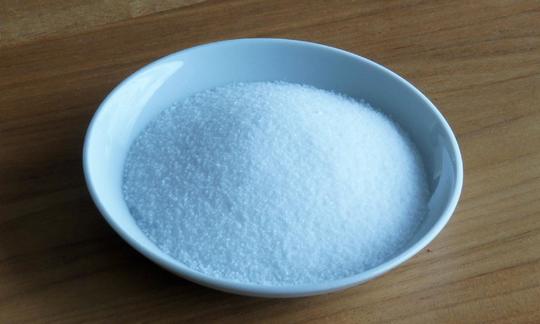

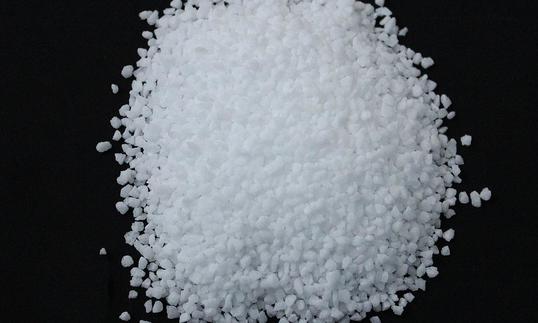

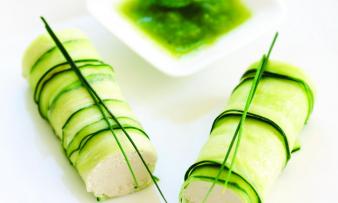
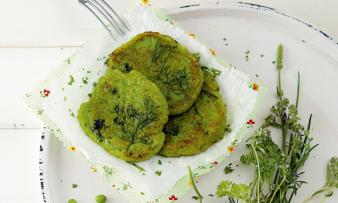






Comments